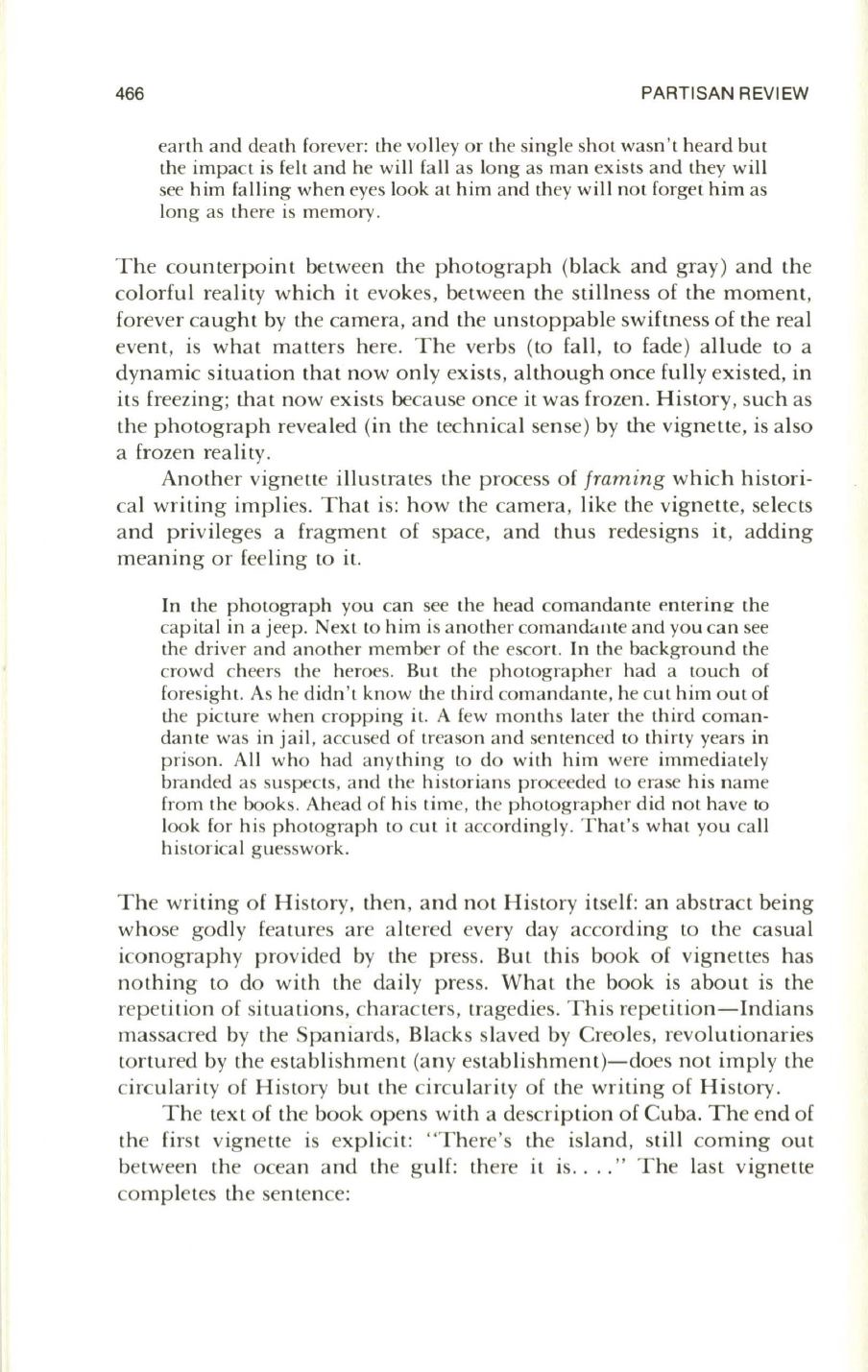
466
PARTISAN REVIEW
earth and death forever: the volley or the single shot wasn't heard but
the impact is felt and he will fall as long as man exists and they will
see him falling when eyes look at him and they will not forgel him as
long as there is memory.
The counterpoint between the photograph (black and gray) and the
colorful reality which it evokes, between the stillness of the moment,
forever caught by the camera, and the unstoppable swiftness of the real
event, is what matters here. The verbs (to fall, to fade) allude to a
dynamic situation that now only exists, although once fully existed, in
its freezing; that now exists because once it was frozen. History, such as
the photograph revealed (in the technical sense) by the vignette, is also
a frozen reality.
Another vignette illustrates the process of
framing
which histori–
cal writing implies. That is: how the camera, like the vignette, selects
and privileges a fragment of space, and thus redesigns it, adding
meaning or feeling to it.
In
the photograph you can see the head comandante entering the
capital in a jeep. Next to him is another comandallte and you can see
the driver and another member of the escort.
In
the background the
crowd cheers the heroes. But the photographer had a touch of
foresight. As he didn't know the third comandante, he cut him out of
the picture when cropping it. A few months later the third coman–
dante was in jail, accused of treason and sentenced to thirty years in
prison. All who had anything to do with him were immediately
branded as suspects, and the historians proceeded to erase his name
from the books. Ahead of his time, the photographer did not have
to
look for his photograph to cut it accordingly. That's what you call
historical guesswork.
The writing of History, then, and not History itself: an abstract being
whose god ly features are altered every day according to the casual
iconography provided by the press. But this book of vignettes has
nothing to do with the daily press. What the book is about is the
repetition of situations, characters, tragedies. This repetition-Indians
massacred by the Spaniards, Blacks slaved by Creoles, revolutionaries
tortured by the establishment (any establishment)-does not imply the
circularity of History but the circularity of the writing of History.
The text of the book opens with a description of Cuba. The end of
the first vignette is explicit: "There's the island, still coming out
between the ocean and the gulf: there it is ... ." The last vignette
completes the sentence:


